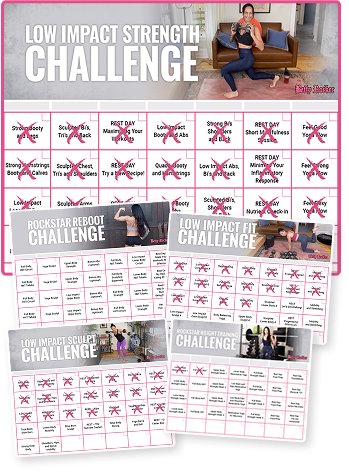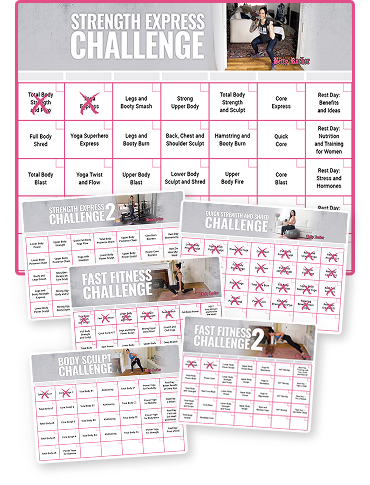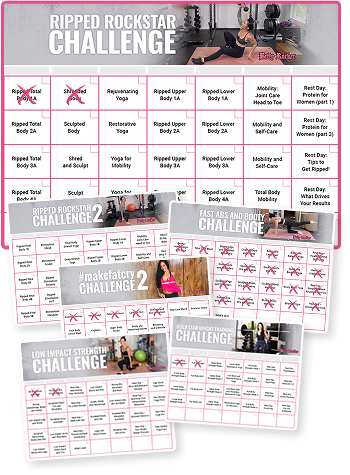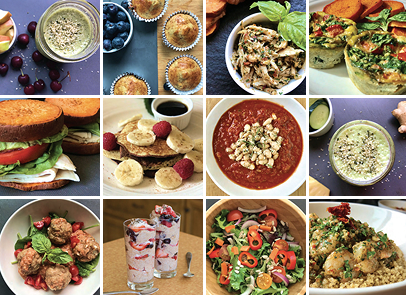Got it! I can help.
When it comes to losing weight, I like to help you build sustainable results that last.
You’ll gain strength and lose body fat, shifting your muscle to fat ratio which is what we call your “body composition.”
Sounds good, what do I do?There are a few key things you can do to impact your body composition, and they all work together. Tap each one to see how it works:
Increase your daily step count
Walking has an incredible impact on our ability to lose body fat AND it has some pretty spectacular health benefits for us as women!
Here’s an excerpt from a recent podcast where I tell you more about how walking more can support your body composition goals:
(BTW you can listen to the entire conversation about the major benefits we get as women when we walk more right here).
Low Impact Strength Challenge
Inside the Rock Your Life workout studio!
Sculpt and strengthen your entire body with low impact resistance training (no jumping or high impact cardio)!

Eat more protein
This one tweak alone can make a huge difference if it’s not something you’ve considered before. Especially if you’re struggling at all with sugar cravings or having trouble with overeating – which is going to increase fat storage and lead to weight gain.
Protein is more satisfying than fat or carbs. When we include it in each meal, we feel more full and satisfied from that meal and it’s far easier to avoid overeating or snacking, and it reduces cravings.
Protein breaks down into the amino acid building blocks that your body needs for muscle tissue repair and rebuilding. So it’s an essential component in you seeing results from your training.
Our body needs amino acids for more than just muscle repair – it needs them for a strong immune system, for mood regulation, for hormone and enzyme function and for brain function.
When we don’t get enough protein daily, our body breaks down our muscle tissue to access the aminos stored there – undermining your body composition goals and making it easier for you to gain weight.
Protein amounts can vary and have a range, but if you’re under 40, consider aiming for 20-30 grams per meal as a good place to start. If you’re over 40, consider aiming for 30-40 grams per meal as a good place to start (we don’t absorb the aminos as easily as we age, which is why so many people start to lose muscle and gain more weight).
(BTW you can listen to me explain everything about protein and its benefits right here, plus hear my supplement recommendations).
Try out “3 meal magic”
There is no “one size fits all” diet – but we all need key nutrients to thrive. If you’re feeling a little all over the place with your healthy eating, try out what my friend Trisha Nelson calls “3 meal magic.”
Ensure you’ve got 3 meals each day so you’re fed and fueled for all the things you do daily, including your workouts.
(Yes, you can add a smoothie or a snack if there is a long time between meals or you’re training hard and need an extra nutrient boost, but don’t overcomplicate it.)

Just make sure you’ve got those 3 square meals in daily as your starting point. They should include a solid serving of protein, healthy carbs and some fat.
You need carbs for energy, and you need the fiber from your carbohydrate foods for good gut health and a healthy microbiome. The microbiome is a hugely important ecosystem in your body that impacts your mood, your hormone levels and so much more. Highly processed carbs and sugary foods can disrupt the microbiome and impact your blood sugar. Those are the ones to eat in moderation.
Whole food carbs contain a lot of that gut-friendly fiber and other key nutrients that give you lasting energy. They won’t make you gain weight, they will help you have the energy you need to thrive and push harder in your workouts and support your body composition goals!
Here’s a short clip where I explain how carbs work for us:
(You can listen to the full episode of that podcast here if you want).
Remember: Eating too little can backfire on you, and depress your resting metabolic rate (making it much harder to lose weight). LEA, or “low energy availability” is a well documented condition that many female athletes suffer with due to restricting food intake (especially carbs) while playing sports because of the pressure to be thin. Don’t fall into the trap of depriving yourself of the nutrients you need to thrive.
Prioritize your strength when it comes to your training
This is a powerful way to see faster fat loss, but I get that it might feel counterintuitive at first. What we want to do is shift our focus away from weight loss alone (which can lead to overtraining), and instead focus on strengthening our muscle tissue because of how this actually impacts your body composition (muscle to fat ratio).
The reason this can help you with your goal so much better is because of how muscle tissue serves you and speeds up fat loss. Muscle is a very metabolic tissue, so the more of it you have, the faster you’ll burn calories, even at rest.
This is a sustainable, long-term fat loss approach that serves you in other ways too, like strengthening your joints and bones, and giving you more power and capability at the same time! Also, muscle is more dense and compact than body fat – so it takes up less space and makes your body look “tighter” and more “toned.”
When we train with a goal for strength, we start adopting training (and eating) strategies that serve and support our energy balance, our hormone levels, and drive faster results in our body composition, making us look more compact and tight all over.
Top strategies include:
- Challenging yourself in your workouts with resistance and explosive cardio, and progressing over time.
- Following a well balanced training program (like mine) so you get an effective stimulus, and the rest and recovery time for your muscle tissue to come back strong.
- Eating enough protein for our needs in our regular meals to support muscle repair, increase fullness and satisfaction (beats cravings).
- Eating enough whole food, fiber-rich carbs through the day for lasting energy and fuel between meals, sparing your muscle tissue from being broken down.
- Including healthy fats consistently so we can absorb fat soluble vitamins and have the energy needed for low impact activities that spare the amino acids in our muscle tissue.
Strength Express Challenge
Inside the Rock Your Life workout studio!
Get strong and sculpted in 15-20 minutes power workouts that will keep you on track to reaching your goals!

Remember that everything is connected
When it comes to losing weight, it’s easy to only focus on the “dials” we can turn ourselves, like how we eat, or how we train. And just those 2 dials alone can take time fine tuning! How these two things impact fat loss has a lot to do with other dials, dials which if we turn them as well can help speed up the results we’ll see from our eating and exercise.
For example, sleep is a dial that we can fine tune (certain times of our lives more than others!). If we stay up too late, or are eating, drinking alcohol or exercising too close to bedtime, our sleep suffers and this impacts our hormone levels and our ability to see results with fat loss or strength gains. So whenever possible, make sleep and your bedtime a top priority.
Our stress levels are another dial we can impact by actively practicing things that help us develop more resilience to stress we face. Stress is pretty unavoidable, so adding in a breathing practice daily, or meditation, or therapy, or anything that helps you develop more resilience and a state of calm internally will support your body’s ability to function optimally and impacts how effective your workout and your eating habits will be for you losing body fat or adding muscle.
Our age and life stage are also a contributing factor. This is a dial that life turns for us, and we can’t stop it from turning year by year. Our hormone levels change, our bodies age, and this influences how our bodies respond.
There are many strategies that can mitigate the impacts that age has on us though, including cultivating better habits with the things we do have control over, like eating healthy foods consistently, exercising consistently, getting to bed on time consistently, regulating our stress consistently (what I call the “4 pillars of health”).
We can also do things like get supportive care from a doctor for our hormones, and follow a training program designed for our life stage (which is something I provide).
Ripped Rockstar Challenge
Inside the Rock Your Life workout studio!
Get totally shredded with progressive strength training workouts!


